Prairie Snapshot: Eight companies with potential in central Canada
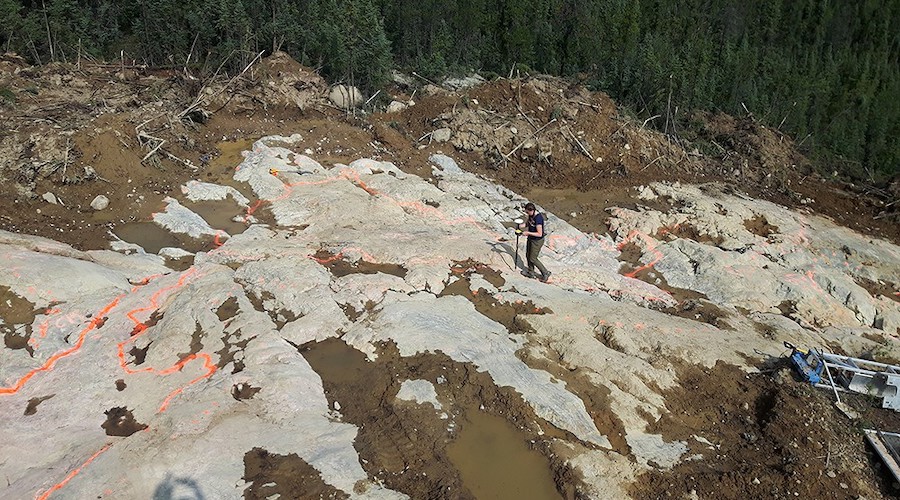
Alces Lake has some of the highest REE grades in the world. The company says grab samples from the Olden River target confirm REE mineralization over a 175-metre strike length, with assays up to 3.94% total rare earth oxides (TREO). Channel sampling results have included 6.23% TREO over 1.7 metres at the Danny target; 2.84% TREO over 3.1 metres at Ermacre; 1.01% TREO over 7.7 metres at Biotite Lake; and 2.36% TREO over 1.7 metres at the newly discovered Strocen zone. Sampling has also revealed the presence of gallium. Grab and channel samples also indicate a new discovery at Diablo in the Western anomaly area, according to Appia Energy.
Two diamond drills are on site as part of a program that may eventually reach 10,000 metres. Drilling is complete at the Biotite Lake target and is ongoing at the Wilson-Richard-Charles-Bell and Ivan-Dylan-Dante targets.
With plenty of near-surface targets to explore, Appia Energy recently acquired a further 11,055 hectares of land contiguous to the Alces Lake claim block, bringing its total holdings to 35,682 hectares. All the critical REE minerals (neodymium, praseodymium, europium, terbium, dysprosium, and yttrium) are contained exclusively in monazite, which occurs at Alces Lake as isolated grains, in 1-3-cm thick lenses and isolated clusters, and up to meters-thick massive mineralization.
The Saskatchewan Research Council and the provincial government have plans to build a REE processing facility in Saskatoon, a move that will benefit Appia going forward. Tests at current pilot facilities have already led to an optimized flowsheet.
Appia is also exploring three wholly-owned uranium properties— Loranger, North Wollaston and Eastside—in the Athabasca Basin. All three are near-surface with no sandstone cover and negligible overburden. They were last explored a year ago with airborne surveying and ground prospecting.
The company’s property in Elliot Lake, Ontario, has resources of both uranium and REEs, but it has seen little work since 2014.
Appia Energy has a market capitalization of C$94.9 million ($74.7m).
Denison Mines
Denison Mines (TSX: DML; NYSE: DNN) was the big name in uranium mining in Elliot Lake, Ontario, during the heyday of production in the mid-20th century. Now the company has turned its attention to the Athabasca Basin in Saskatchewan where it has three advanced uranium exploration projects, many less advanced properties, and an interest in a producing mine.
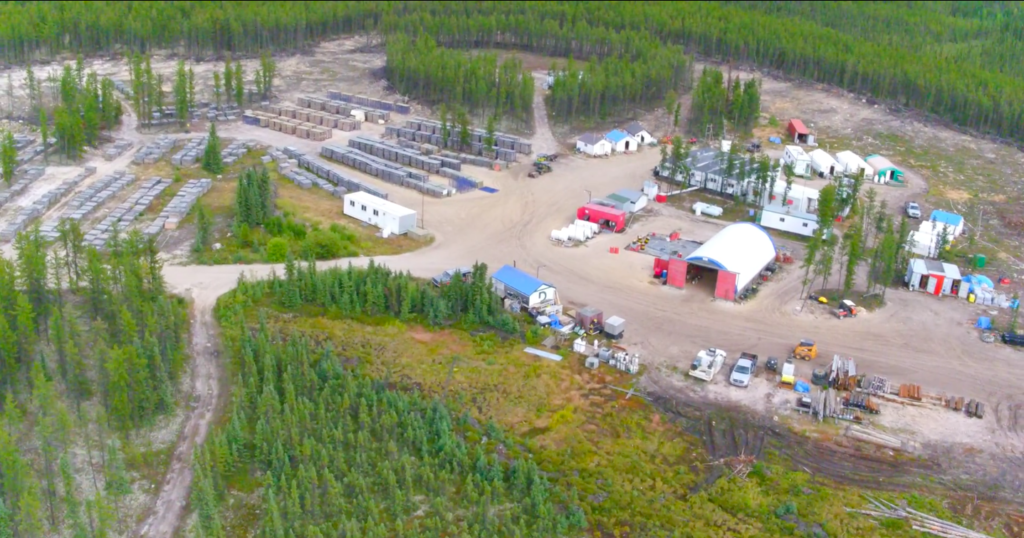
The company’s flagship property is Wheeler River on the southeast rim of the basin, 35 km northeast of the Key Lake uranium mill. The property, 95% owned by Denison, hosts two deposits. First is Phoenix, the highest grade undeveloped uranium deposit in the world. The indicated resource is 166,000 tonnes at 19.1% uranium oxide for 70.2 million lb. contained uranium oxide. The high-grade core within the resource totals 63,900 tonnes grading 43.2% uranium oxide for 59.9 million lb. contained uranium oxide. There is also an inferred resource of 9,000 tonnes grading 5.8% uranium oxide for 1.1 million lb. contained uranium oxide.
Denison is testing in-situ recovery (ISR) for the Phoenix deposit in four separate areas covering about 65% of the deposit. So far, uranium recovery using ISR has been better than 90% and 98.5% of that uranium is recovered during further processing.
Annual production from the Phoenix deposit would be between 6 million and 12 million lb. uranium oxide depending on the uranium concentrations from the wellfield. There is potential for creating a closed-loop system that would recycle mining solution back to the IRS wells with little or no discharge of effluents.
The Phoenix feasibility study is due later this year and the draft environmental impact assessment (EIS) early next year. Construction could begin in 2023 on an ISR mine with a 10-year life, the company says.
The second deposit at Wheeler River is Gryphon, which contains basement hosted, high-grade mineralization suitable for conventional underground mining methods. The indicated resource is 1.6 million tonnes grading 1.7% uranium oxide for 61.9 million lb. contained uranium oxide, and the inferred resource is 73,000 tonnes grading 1.2% uranium oxide for 1.9 million lb. uranium oxide. The deposit remains open down plunge and within certain areas along strike.
Cash from the Phoenix ISR mine could fund the development of the Gryphon mine, which would ramp up in 2030 and produce for seven years. Total life of the project for both deposits would be 14 years.
Denison is also the 66.9% owner and operator of the Waterbury Lake advanced exploration uranium project with Korea Waterbury Uranium LP (33.1%). It is found in the northern part of the eastern Athabasca Basin. Again, there are two deposits —The Heldeth Tué (THT, formerly J zone) and Huskie —located near the McClean Lake mill. This project, too, is a potential ISR producer.
The preliminary economic assessment completed in 2020 projected that mining Waterbury Lake could produce a total of 9.7 million lb. uranium oxide over six years. The project is given a base case after-tax net present value at an 8% discount rate of C$72 million with an after-tax internal rate of return of 30.4%. Initial capex is estimated at C$111.6 million and the payback period is 23 months.
Indicated resources for the THT deposit are 291,000 tonnes grading 2% uranium oxide for 12.8 million lb. contained uranium oxide. The Huskie deposit contains inferred resources of 268,000 tonnes grading 0.96% uranium oxide for 5.7 million lb. contained uranium oxide.
The third advanced exploration project is Midwest Lake, where Denison holds a 25.17% stake. Joint-venture partner Orano Canada holds the balance and is the operator.
The 2017 resource estimate for the Midwest Lake project includes 453,000 indicated tonnes grading 4% uranium oxide for 39.9 million lb. contained uranium oxide and 793,000 inferred tonnes grading 0.66% uranium oxide for 11.5 million contained lb. uranium oxide in the Main deposit. The A deposit has indicated resources of 566,000 tonnes grading 0.87% uranium oxide for 10.8 million contained lb. uranium oxide and inferred resources of 53,000 tonnes grading 5.8% uranium oxide for 6.7 million contained lb. uranium oxide.
The Midwest Lake project received EIS approval in 2007, but production is not planned at this time.
Denison’s fourth core project is the Hook-Carter property that spans 15 km of relatively untested ground on the Patterson Lake corridor (more on the potential there with the item about Fission Uranium). Denison completed the initial Hook-Carter drill program in 2018.
Denison also owns 22.5% of the producing McClean Lake uranium mine and mill. The operator is Orano Canada (77.5%), and the other partner is OURD Canada. The mill tolls uranium ore from the Cigar Lake mine and was shut down for four months earlier this year to correspond with production stoppage at the mine. The mill has the capacity to produce up to 24 million lb. uranium oxide annually.
Denison’s other exploration projects are, with one exception, all uranium and in Saskatchewan. The exception is the 100%-owned Torwalt Lake property in Alberta. The company has various interests (optioned, joint ventured or owned) in at least a dozen other properties in Saskatchewan, making it potentially the busiest uranium explorer in the country.
Denison Mining has a market capitalization of C$1.6 billion ($1.2bn).
Fission Uranium
Fission Uranium (TSX: FCU; US-OTC: FCUUF) is the most active player in the Patterson Lake corridor on the southern edge of the Athabasca Basin. The near-surface, high-grade Triple R deposit is under development at its wholly-owned, 1,039-hectare Patterson Lake South (PLS) project.
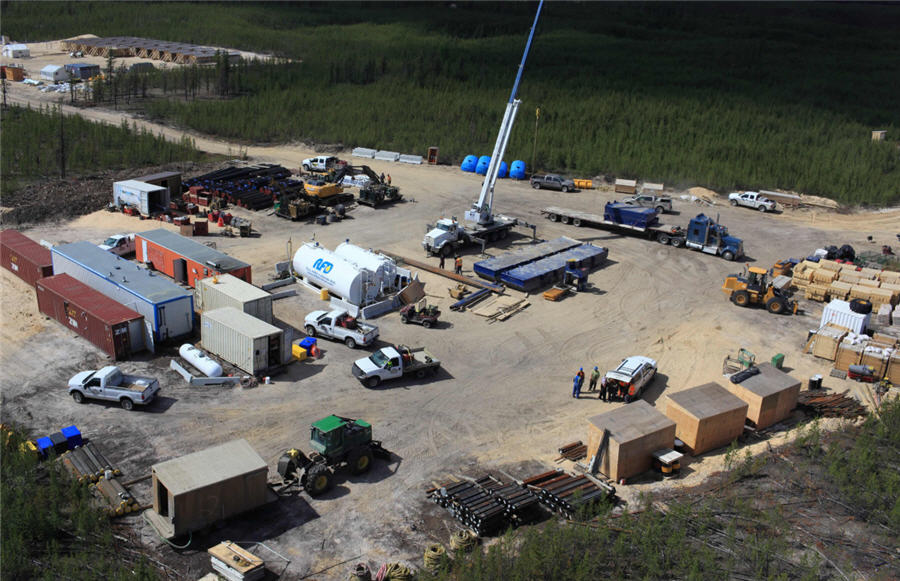
The Triple R deposit has indicated resources of 2.2 million tonnes at an average grade of 2.1% uranium oxide for 102.3 million contained lb. uranium oxide and inferred resources of 1.2 million tonnes grading 1.22% uranium oxide for 32.8 million lb. contained uranium oxide. The deposit is open in all directions and at depth.
Fission discovered the Tripe R deposit in November 2012. It consists of five separate mineralized zones over an east-west strike length of 3.2 kilometres.
The prefeasibility study prepared in 2019 examined underground mining of two of the five zones that make up the Triple R deposit. It suggested that the project has an after-tax net present value at an 8% discount rate of C$702 million at a long-term price of $50 per lb. uranium oxide. The internal rate of return would be 25%. These numbers were for a 1,000-tonne-per-day mining rate and processing with acid leaching, solvent extraction and precipitation. The project has the potential to produce up to 15 million lb. uranium oxide per year in the form of yellowcake.
The PLS project would have operating costs of $7.18 per lb. uranium oxide, in the bottom quartile of the sector.
In June, Fission began the feasibility study for PLS. In preparation for the advanced look at mining the Triple R deposit, a 45-hole drill program focusing on resource expansion and project de-risking was initiated in February. The first 20 holes drilled hit wide mineralization in multiple stacked intervals, as did the next 25 holes.
The feasibility study is to be completed next year, followed by the environmental impact statement (EIS) in 2023. Assuming approvals are forthcoming, three years of construction would be followed by first production in 2026.
Fission Uranium has a market capitalization of C$647 million ($510m).
Karnalyte Resources
Karnalyte Resources (TSX: KRN) is the sole owner of the Wynyard potash project near the town of Wynyard, Saskatchewan. This is a greenfield project suitable for solution mining, and it is awaiting financing. The output would be a premium granular potassium chloride (KCl) product with a low sodium content.
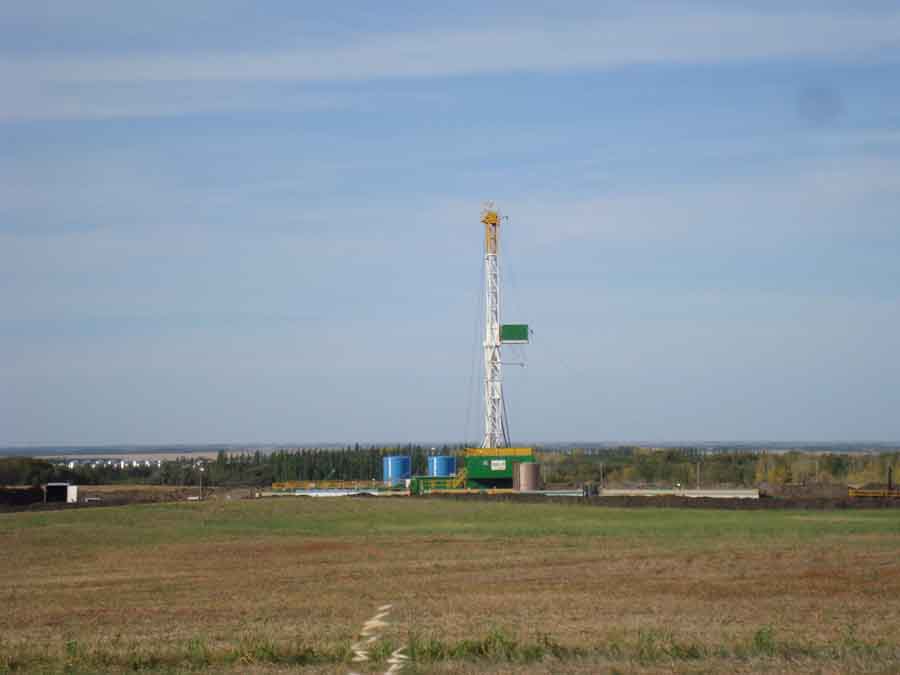
The Wynyard feasibility study was completed in 2016, and it examines a phased output beginning with 625,000 tonnes per year KCl, eventually growing to 2.1 million tonnes per year with two additional phases. The mine life would be 70 years.
The project has an after-tax net present value (NPV) at an 8% discount of $3.4 billion and an internal rate of return (IRR) of 19.1% for all three phases. The capital expenditure for the first phase would be $789 million and total $2.4 billion for all three phases.
Karnalyte has outlined mineralization in the Patience Lake, Belle Plaine and Esterhazy members. The proven and probable reserves for Patience Lake and Belle Plaine are 711.7 million tonnes with an average grade of about 18.6% potassium chloride. The Esterhazy proven and probable reserves are 114.4 million tonnes averaging 26.2% potassium chloride in the proven portion and 26.5% potassium chloride in the probable portion.
The Patience Lake and Belle Plaine members also have a probable reserve of 694.6 million tonnes grading 22.1% magnesium chloride. The recovery of this mineral is at the prefeasibility stage. The magnesium project has a NPV of C$512 million with a 10% discount rate and an IRR of 26.1%, both after taxes. It carries a capex of C$171 million in addition to the first phase of the potash project. Two products would be produced — a 99% hydromagnesite and a 32% magnesium chloride brine.
Karnalyte Resources has a market capitalization of C$8 million ($6.3m).
Murchison Minerals
Murchison Minerals (TSXV: MUR; US-OTC: MURMF) has three base metal properties. Two are in Quebec and the flagship Brabant-McKenzie zinc-copper-silver-lead project is in Saskatchewan, about 175 km northeast of La Ronge. This is a volcanogenic massive sulphide (VMS) deposit — the only significant one known in the area — and is open in all directions.
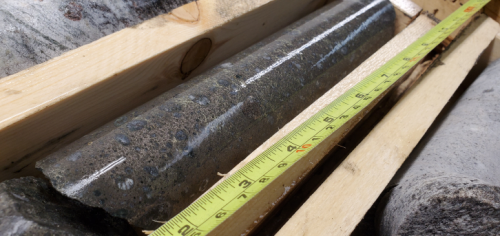
The Brabant-McKenzie deposit saw 48,000 metres of drilling since its discovery in the 1950s. Work concentrated on the deposit and little historic drilling was done outside its footprint. Murchison has flown 1,950 line km of geophysical surveys since January 2019 and discovered more than 100 discreet electromagnetic anomalies, leading the company to believe there are other mineralized occurrences to discover.
The project area covers 627 sq. km, and the company drilled extensively in 2017 and 2018, completing a 43-101 compliant resource estimate at the time. The deposit contains 2.1 million indicated tonnes averaging 7.1% zinc, 0.7% copper, 0.5% lead plus gold and silver (9.98% zinc-equivalent). There is also an inferred resource of 7.6 million tonnes grading 4.5% zinc, 0.6% copper, and 0.2% lead plus gold and silver (6.29% zinc-equivalent). A 3.5% zinc-equivalent cut-off was used for these calculations.
The deposit outcrops and can be divided into two zones, Upper and Lower. The Upper zone has been defined over a 1 km strike length to a depth of 50 metres with an average thickness of 5.3 metres. The lower zone lies 25 or 30 metres below and has been defined to 800 metres from surface with an average width of 6.7 metres. The deposit is open at depth and laterally.
The Brabant-McKenzie project lies in the same geological environment as the Flin Flon, Lalor Lake, Lynn Lake and Snow Lake deposits, notes Murchison. Mineralization occurs as disseminated to massive, semi-massive and breccia vein sulphides.
Murchison conducted ground prospecting in 2019 and 2020 and exploration drilling last year and this year. Winter drilling in 2021 drew attention to the Betty zone about 1 km northeast and on strike with Brabant-McKenzie. Two holes cut narrow VMS-type mineralization grading up to 9.22% zinc-equivalent. Downhole geophysics identified a 700 x 200 metre conductor that was drilled this summer.
While the company awaits results from this summer’s drilling, it has been conducting metallurgical tests on samples from Brabant-McKenzie. The preliminary coarse grind-flotation-rougher-scavenger work upgraded the zinc grade to 27% from 9.1% with a 98% recovery. Work with a four-stage cleaner circuit resulted in a concentrate grading 50.2% zinc with a 95.1% recovery. Copper recovery to concentrate was also excellent: up to 2.2% copper with 92.9% recoveries with flotation-rougher-scavenger and up to 4.12% with a 74.7% recovery after four stages of cleaning.
The company plans to continue resource definition and expansion at Brabant-McKenzie.
Murchison is also active at its HPM property, a high-grade nickel sulphide occurrence where drilling has returned up to 2.4% nickel. The company claims the drill core is visually identical to Sudbury and Voisey’s Bay drill core. The property is located between Baie-Comeau and Fermont, Quebec.
Murchison is also testing the Barraute-Landrienne property about 60 km north of Val d’Or, Quebec, for its base metal potential.
Murchison Minerals has a market capitalization of C$8.2 million ($6.4m).
NexGen Energy
NexGen Energy (TSX: NXE; NYSE: NXE) has also chosen to hunt for uranium in the southwest part of Saskatchewan’s Athabasca Basin. It holds 199,576 hectares, including the Rook I project, which hosts the Arrow deposit, in the Patterson Lake corridor. The project is immediately north of Fission Uranium’s PLS holdings.
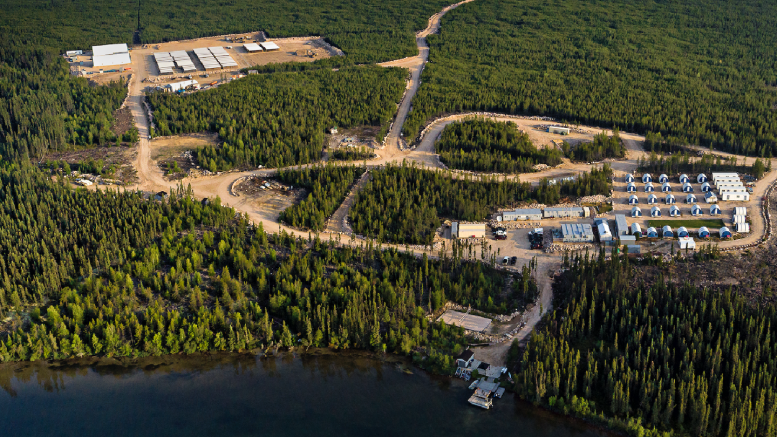
In February, NexGen completed a feasibility study for development of the Arrow deposit. It has measured resources of 209.6 million lb. of uranium oxide contained in 1.57 million tonnes grading 4.35% uranium oxide. There are 47.1 million lb. contained in the indicated resource of 1.57 million tonnes grading 1.35% uranium oxide. Finally, there are 80.7 million lb. of uranium oxide contained in 4.4 million inferred tonnes grading 0.83% uranium dioxide. The probable reserve is estimated to be 239.6 million lb. of uranium oxide in 4.6 million tonnes grading 2.37% uranium oxide.
The feasibility study puts the Arrow mine’s after-tax net present value (NPV) at an 8% discount rate at C$3.5 billion and after-tax internal rate of return (IRR) of 52.4% with a long-term uranium oxide price of $50 per pound. The mine life would be 10.7 years, although Rook I is permitted for 24 years.
Creating a mine and mill capable of producing 28.8 million lb. of uranium oxide annually in the first five years carries a pre-production capital requirement of $1 billion. The average after-tax net cash flow during that time would be $763 million annually. The project would pay for itself in less than a year.
The mine would be developed for long-hole stoping with a shaft and internal ramps. It would produce about 1,200 tonnes per day for the mill. Processing would include ore sorting and storage, grinding, acid leaching, counter-current decantation, and solvent extraction expected to achieve 97.6% overall recovery. All tailings will be stored in an underground management facility to reduce the surface footprint.
NexGen expects to produce its first sustainability report, community agreements, environmental impact statement, and licensing submission by the end of this year for the Arrow mine.
Arrow is not the only target on the Rook I project. There are also South Arrow (discovered in 2017), Bow (2015), Cannon (2016) and Harpoon (2016).
South Arrow has a 290-metre strike length and has been traced to 185 metres vertically. The highest grades drilled come from semi-massive to massive pitchblende similar to that seen in the high-grade domains of the Arrow deposit 400 metres to the north. The discovery hole cut 20.5 metres grading 1.19% uranium oxide, including 3.5 metres at 6.21% uranium oxide, and another 24.5 metres at 1.46% uranium oxide, including 5 metres at 4.21% uranium oxide and 4 metres at 3.33% uranium oxide.
The Harpoon discovery is 4.7 km northeast of the Arrow deposit. The mineralization has visible uranium and dense accumulations of massive to semi-massive pitchblende identified over a strike length of 6 kilometres. The discovery hole intersected 17.5 metres grading 3.89% uranium oxide, including 2.5 metres at 12.49% uranium oxide.
NexGen has other properties in the Athabasca Basin (SW1, SW2 and SW3), but they are in the early stages of exploration. The SW1 property exhibits similar geophysical signatures to the Rook I property.
NexGen Energy has a market capitalization of C$3.5 million ($2.7m).
Rockcliff Metals (CSE: RCLF; US-OTC: RKCLF) has three projects in the Thompson nickel belt of northern Manitoba. The company’s philosophy is to become a copper miner by developing low-cost near-surface deposits with ramp access. All three projects are within trucking distance of the suspended Bucko mine and mill near Snow Lake.
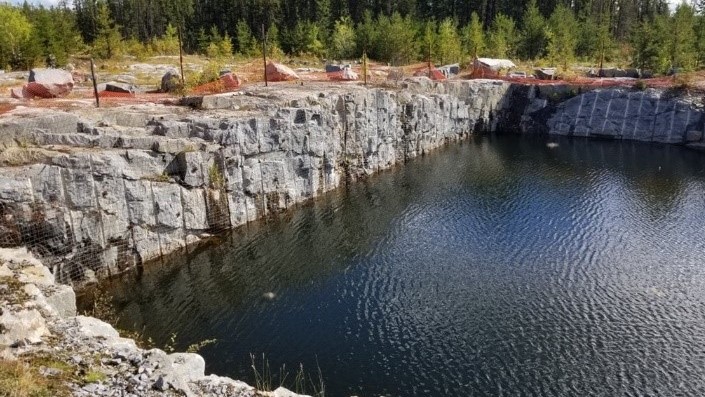
The company’s flagship property was the Talbot gold-copper project. It earned a 51% interest from Hudbay Minerals (TSX: HBM; NYSE: HBM) in December 2019. In August, Hudbay exercised its buy back right to acquire an additional 2% interest in the Talbot project, making it the new 51% owner and operator. Rockcliff will retain a 35% carried interest in the project though the life of the mine, provided it contributes its pro-rata share of pre-construction capital.
Last year Rockcliff updated the Talbot resource estimate to include 2.2 million indicated tonnes grading 1.13% copper, 1.79% zinc, 2.06 grams gold per tonne, and 36 grams silver per tonne (4.4% copper-equivalent). The inferred resource is 2.4 million tonnes averaging 1.13% copper, 1.74% zinc, 1.87 grams gold per tonne and 25.8 grams silver per tonne (2.98% copper-equivalent).
The near-surface Rail copper deposit is wholly owned by Rockcliff. It has indicated resources of 1.2 million tonnes grading 2.7% copper, 0.9% zinc, 0.8 gram gold per tonne, and 36 grams silver per tonne (3.5% copper-equivalent). The inferred resource is 728,000 tonnes averaging 3.1% copper, 0.7% zinc, 1.1 gram gold, and 8.5 grams silver (4.1% copper-equivalent).
The Rail deposit has a strike length of 960 metres and a vertical depth of about 700 metres. It is open to the south and at depth where untested conductive anomalies have been identified.
The Tower high-grade copper deposit is also 100%-owned by Rockcliff. It has an indicated resource of 1 million tonnes grading 4.7% copper, 1.3% zinc, 0.85 gram gold per tonne, and 23.7 grams silver per tonne (5.2% copper-equivalent). There are another 400,000 inferred tonnes grading 3.5% copper 1.1% zinc, 0.57 gram gold, and 18 grams silver (3.4% copper-equivalent).
The Tower deposit has a strike length of more than 1,000 metres and a vertical depth of about 750 metres. It remains open to the south and at depth. A high-grade nickel-platinum group metals (PGM) discovery has been made 500 metres south of the Tower deposit.
A preliminary economic assessment has been produced that includes mining the Tower and Rail deposits, then processing the ore at the Bucko mill. Such a project has a post-tax net present value at an 8% discount rate of $69 million and an internal rate of return of 29%. The PEA puts the pre-production capital cost at $98 million to create a project that would have average annual production of 18,600 tonnes of copper-equivalent. It would pay for itself 2.1 years after production began.
Rockcliff has an active exploration team checking other potential sources of ore such as the historical Lon, Bur, Morgan, Copperman, and MacBride deposits. Together they have a non-41-101 compliant resource of 3.9 million tonnes grading 4.8% copper-equivalent.
Goldpath, a wholly owned subsidiary of Rockcliff, is the gold-hunting arm of the company. It is focused on underexplored gold properties in Manitoba’s Snow Lake area. The SLG property is considered a flagship asset. It is located within trucking distance of a former gold producer and 2,000 tonnes per day processing facility. The Laguna gold mine — the province’s first and highest-grade gold mine —is optioned to Kinross Gold (TSX: K; NYSE: KL), which is earning a 70% interest by spending $5.5 million on the property, but Rockcliff remains the operator.
Rockcliff Metals has a market capitalization of C$20 million ($15.7m).
Western Resources
Western Resources (TSX: WRX; US-OTC: WTRNF) manages its 100% interest in the Milestone potash development through subsidiary Western Potash. The parent company is phasing out its real estate investments so that it can improve its financial position and refocus its efforts on creating a new mine 35 km southeast of Regina, Saskatchewan.
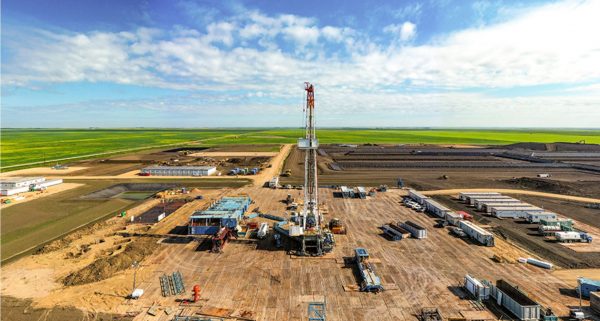
Western Resources acquired Western Potash in March 2017, thus making it the owner of the Milestone potash project. There was a feasibility study done in 2012, but a new scoping study for a solution mining operation was released in July 2015. The engineering was completed in 2016.
With the new owner, a construction contract was awarded in 2019, and the first phase of construction was 83% complete by May 2020, when work on the Milestone project was halted, due in part to the Covid-19 pandemic.
Western began hot mining (recirculating heated saturated brine from the crystallization pond into underground caverns) in April 2020. Sodium chloride (salt) in the solution is selectively replaced with dissolved potassium chloride (potash, KCl) before it is returned to the crystallizing pond. Each of the three underground caverns will send about 4,000 tonnes of potassium chloride per month to the pond.
Once finished, the processing plant will de-brine, dry and compact the potash before it is delivered to the customer.
Meanwhile, Western Potash continues to advance and optimize its mining operations. The new plan is to focus on increased solution mining efficiency and the life span of the caverns. A third-party engineering firm is reviewing the operating plans and updating the 43-101 technical report.
Hopefully, project financing can be completed this year and the project restarted, according to the company.
The last 43-101 report estimated Milestone to have a measured resource of 154.5 million tonnes, an indicated resource of 22.5 million tonnes, and an inferred resource of 93.6 million tonnes, all of which grade 29% potassium chloride.
Western Resources has a market capitalization of C$36.4 million ($28.6m).
(This article first appeared in The Northern Miner)




